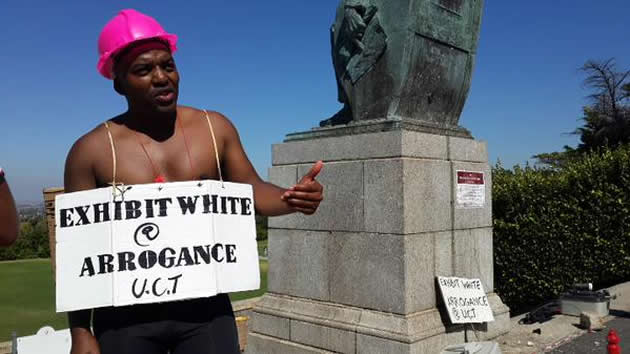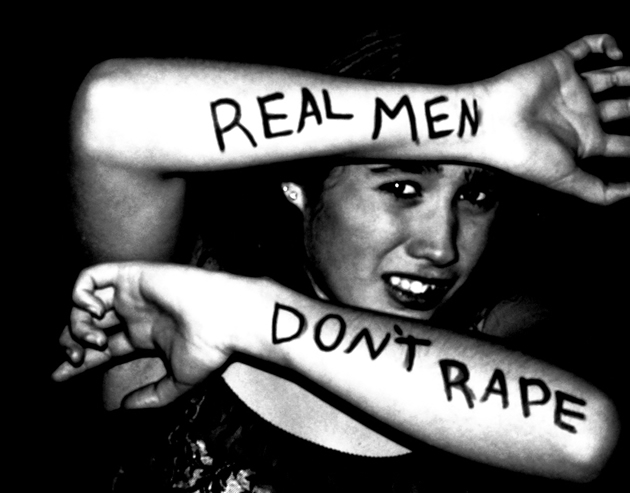Bringing down Cecil John Rhodes’ statue

Rebecca Hodes Correspondent
On March 9, a student named Chumani Maxwele staged a political protest against the lack of racial transformation at the University of Cape Town. His choice of protest site — the statue of Cecil John Rhodes at the foot of the Jameson stairs — and his medium — human excrement — were meant to cause maximum offence.
 They were meant to inflame university authorities, confront students, and incite the public. The sculpture of Rhodes is the most controversial monument on UCT campus.
They were meant to inflame university authorities, confront students, and incite the public. The sculpture of Rhodes is the most controversial monument on UCT campus.
It is a tribute to a man who, more than anyone else (with the arguable exceptions of Frederick Lugard and Belgium’s Leopold II) has come to embody the colonial dispossession and oppression of Africans.
The statue’s stand-alone persistence at the heart of the university’s upper campus is itself a matter of wonder.
As the Rhodes Foundation has sought to re-brand itself, to re-imagine its legacy, including through an alliance with the Mandela Foundation, it is surprising that the statue still exists as it does — unmediated by an oppositional placard or sculptural riposte to the validity of Rhodes’ vision.
There are many other monuments to Rhodes around Cape Town such as the one that stands in the Company Gardens.
In UCT’s version, Rhodes sits pensively, in the repose of Rodin’s “The Thinker”.
In the Company Gardens version, he is more dynamic. Standing and pointing towards the north, captured for posterity in his assurance that: “Your hinterland is there”.
Then there’s Rhodes Memorial, a site which has formed the backdrop for so many local newlyweds — an iconic setting for nuptials that has little to do with politics, and much to do with good light and a view.
The existence of the Rhodes statute at UCT is something that Vice-Chancellor Max Price has himself questioned. In his introduction at the inauguration of UCT’s Dean of Humanities, sociology Professor Sakhela Buhlungu, Price named the statue as an example of UCT’s colonial legacy.
It was only through a feat of imaginative interpretation that Rhodes’ will was re-interpreted to allow scholarships to be granted to students who are neither male nor white.
What is certain is that the executors of Rhodes’ estate have their work cut out for them.
As with the duties of estate executors, the bureaucratic wheels of universities grind slowly, and are fettered by obligations which may be arcane and uninteresting to those who want more immediate transformation. Among these are the students and staff members who walk past the statue everyday, and perceive its continued existence as a deep insult, a symbol of all that is wrong with UCT and with South Africa — the failure of racial transformation, the power of white privilege, and the persistence of racial subordination. The actions of Maxwele have been questioned by students at UCT and other institutions.
In an interview on UCT radio, UWC law student, Abongile Mjokozeli opposed the use of faeces, arguing that it demeaned the dignity of political resistance.
But what was clear from the event was that, while the poo protest was enacted by one student, his anger and frustration at the lack of transformation at UCT are shared by thousands of others.
On Thursday a meeting was held on the Jameson stairs, attended by an impassioned crowd. Speaker after speaker rose to convey fury and to vent frustration at UCT’s institutional racism.
Some got up to disagree, to condemn what they perceived as a violation, a ploy in intimidation, and an attempt to polarize UCT’s student community.
Others advanced mixed opinions, condemning the medium of protest, but supporting its target site.
Boos and cheers, constant interruptions, and running commentary from the crowd, revealed the flourishing of critique and subversion on campus.
And while the source of students frustration — a lack of transformation — focuses attention on the many challenges that UCT faces, the fact of its articulation also testifies to the academy’s success as a site of foment and opposition.
That the speakers remained mostly audible, and the crowd united, was thanks in part to masterful chairing. It was also due to a collective commitment both to talk and to listen, to uphold the respectful, if shambolic, rules of engagement that are fundamental to constructive and inclusive dialogue.
This is not to claim the protest action as a victory for the South African academy, nor for UCT.
Rather, it is to acknowledge the passion, articulacy and charisma of the students who provided the kind of sophisticated and searing political critique that is the elusive ideal of Humanities Departments the world over.
These characteristics are not a product of UCT as an institution.
But, in manifold ways, they are supported by it and, more broadly, by the academy, by South African civil society, and by the political system of democracy.
Not all of the speakers supported a democratic logic, or one that necessarily advances intellectual or political transformation.
At times, the colonial insult epitomised by the Rhodes statue clouded judgments, supporting misguided recommendations.
To render history more immediate, one speaker reminded the crowd that the land we were standing on had been donated by Rhodes, in a contract “drawn in blood”.
In the context of confronting the crimes of the past, what came next was perplexing: “His name must be blotted from the history books”, raising the question of how we are to confront the power of Rhodes’ legacy if not in relation to history?
The significance of history, and the necessity of its faithful and critical rendition, arose again in a meeting of students and staff who gathered later to discuss future protest action.
Faced with the inevitability of institutional delays, and by management structures with expertise in diffusing institutional conflict, what should be done next?
One student recalled the removal of the statue of Saddam Hussein as an example of public action to remove monuments to tyranny: “They just went there, and took it down with ropes,” she said.
(But this is factually incorrect: the removal of the statue of Saddam Hussein in the Baghdad’s Firdos Square, on 9 April 2003, was not the heroic public action initially portrayed by the global media.
The statue was toppled, not by Iraqis, by an armoured US military vehicle.
It is thus not so much a symbol of popular resistance as of US military interventionism. — Daily Maverick.







Comments